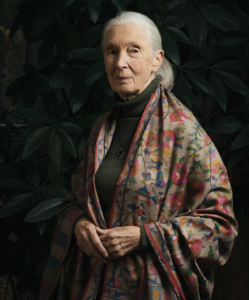Why Disney fails to stay relevant

Photo Courtesy: Unsplash
January 17, 2023
While Disney is the centerpiece of many childhoods, recently the company has failed to capture its former successes with public entertainment.
The Walt Disney Company was founded in 1923, almost 100 years ago. Since then, the company has made more than 200 movies and television shows and acquired Pixar and Marvel from their original companies. While Disney has become a multinational mass media conglomerate, it is clear that the long-term success Disney has achieved in the past far outweighs their current success.
While the company still has successful releases like Black Panther: Wakanda Forever and Soul their other releases do not seem to reach the same widespread appeal. Other releases in the same year like Strange World and Lightyear are barely talked about. Releases like Thor: Love and Thunder and Disenchanted seemed to be more relevant because of their predecessor films than because of genuine audience enjoyment of the new plots.
There are several reasons I think that releases from Disney have failed to appeal to general audiences in recent years. One includes a more targeted approach from the company to appeal to younger audiences, which as a result alienates its older audience. Many of the earlier movies’ appeal is that any age can enjoy the content.
In classic movies like Toy Story or the original Avengers, children and adults can enjoy the plot and characters. However, in lots of their recent works like Zombies, the characters use outdated or use made-up slang too often in the writers’ attempts to be relevant with younger audiences. In Thor: Love and Thunder, the film featured goats that screamed in several scenes, which is probably a reference toward the early 2010 meme. A far outdated joke to make in 2022. In both these movies, the overall theme of the movies was too silly for far too much of the time that at scenes meant to be sentimental and sincere, it was hard to take it all seriously.
Two, recent movies and shows seem to lack the originality and creativity of their older counterparts. This isn’t always the case, but a lot of the most anticipated movies promoted by Disney lately have been live-action remakes of classic movies. While live-action remakes can be great ways to reinvent classic movies, many fail to live up to their original counterparts and seem to only highlight the technology at Disney’s disposal rather than their creativity or innovation. The best example of this would be in the remake of Mulan in 2020. With a focus mainly on the visual effects, the plot itself seemed to lack the flair and warmth of the original.
Finally, because of an increase in competition through Netflix, Hulu, and Youtube, Disney must compete with companies that cater more to teen and adult audiences. From personal experience, the greatest reason to watch Disney was the lack of other choices. Today, streaming platforms lend children and adults movies and shows at their fingertips. Also, as children are exposed to more adult themes earlier in life, they grow out of the careful child-conscious scripts Disney is used to.
According to Pew Research, “Fully 81% of all parents with children age 11 or younger say they never let their child watch videos on YouTube. And 34% of parents say their child watches content on YouTube regularly,” Aaron Smith, Shye Toor, and Patrick Van Kessel said.
With so much more content available to children with arguably more engagement and constant stimulation, Disney no longer dominates the media industry. With hundreds of people who upload content online, Disney simply cannot keep up with the new and interesting content in the media landscape. Unless Disney builds something completely new that can once again appeal to both children and adults through imaginative and original plots, it will lose its place as the dominant power of widespread entertainment.










